The Importance of the Qualitative Mindset in Sales
‘Focus on quality - not quantity.’
It’s a piece of advice sellers hear a lot. But what does it mean exactly? And why is it an important consideration?
Well, it all comes down to a simple reality:
Sales teams can no longer rely on quantity to reach their goal 🤷
The shift towards buyer-centricity means that sellers can’t just book meetings for the sake of it.
Instead, sellers must focus on building and nurturing relationships with leads that are likely to close and create quality pipeline.
This is going to be the focus of today’s article. We’ll cover:
- Why the qualitative mindset is important.
- How leadership can reinforce the quality vs quantity mindset for their teams.
We’ve also featured a wide range of sales leaders.
Let’s go! Scroll to get started 👇
Why is the qualitative mindset important?
The answer here is two-fold.
First of all, the qualitative approach…
Puts the buyer first
Chet Holmes’ buying pyramid is the best way to explain this. And here’s a little infographic to get you thinking ⬇️
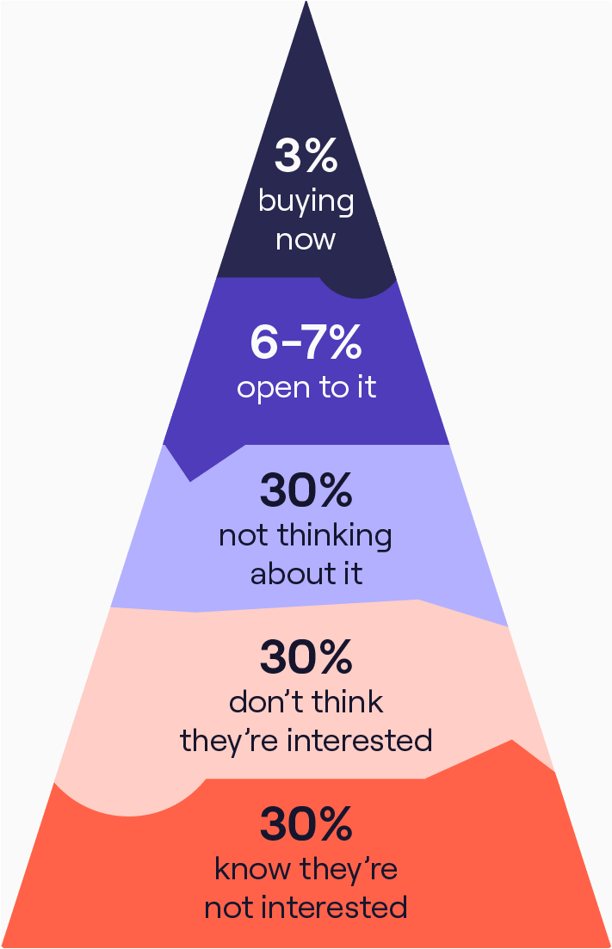
If only 3% of your buyers are in-market right now, how can you ensure that you make a big enough impact on that 3%’s decision-making? In other words, how do you make sure that your sales team is memorable?
And then the 30% that aren’t in-market right now, or the 30% that are unaware, how can you help them to recognise the problem or pains that you can solve? And how is this going to help leave a lasting first impression?
In other words, are reps making sure they stay top of mind for prospects, in the best way possible, in time for when they are ready to buy?
When you set this standard, the focus on quality conversations becomes easier to maintain.
And what’s the positive domino effect of this mentality?
Well, it…
Enables good quality pipeline
Pipeline quality is the future.
And pipeline coverage is dead. Because sales reps will end up pushing products on unqualified leads, just so they can reach their quota.
This is a problem because your pipeline will end up being filled with opportunities that won’t get very far.
Here’s the impact of considering high-quality leads:
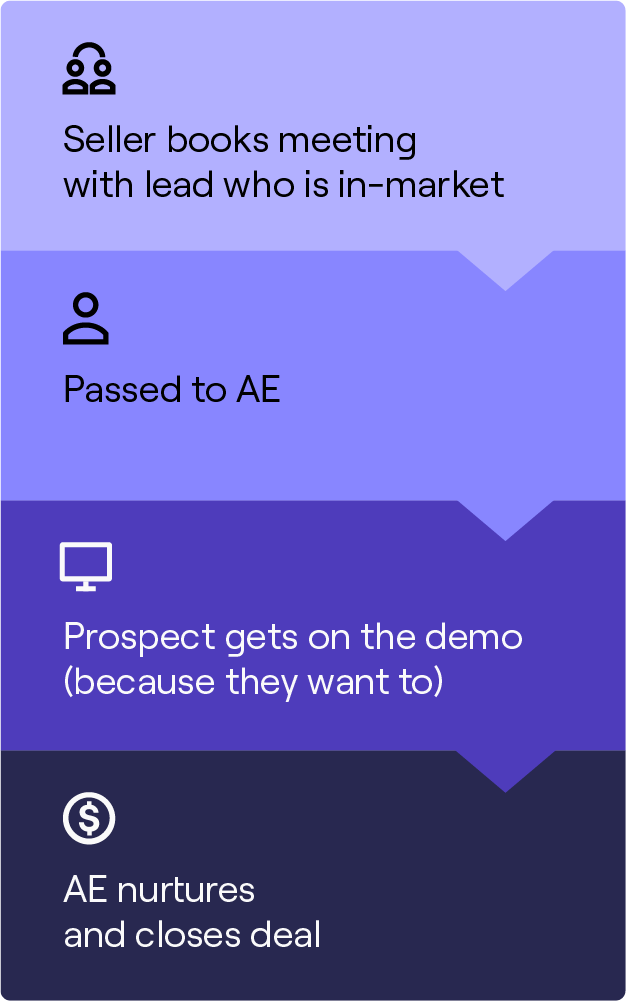
And here’s what happens when you just fill the funnel with low-quality leads 🙈:
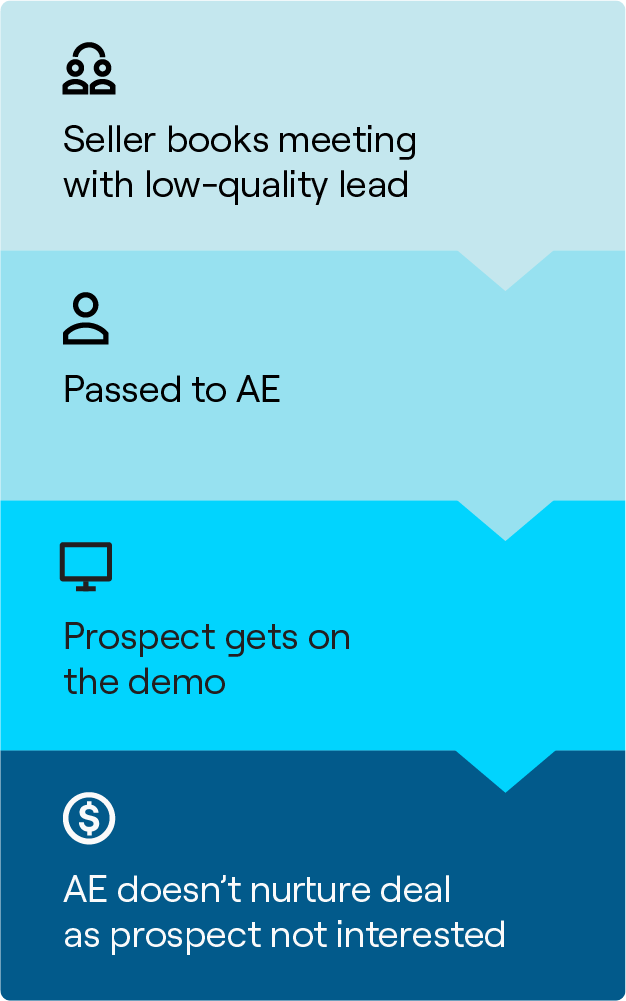
This is why the qualitative mindset is crucial to instil into your team. It not only ensures better conversion rates and pipeline quality but also fosters customer loyalty and retention, ultimately leading to long-term success.
Diana Stepanova, The Operations Director from Monitask, said:
“It helps prevent sales reps from chasing low-value deals, which can be both time-consuming and costly.”
What’s key here?
Well, as a sales leader, it’s your job to ensure reps are sourcing quality leads that will have a higher chance of converting. Ask your sales team to do more with less.
And your deals will progress, all the way to closing.
And if you want some proof in the pudding?
Maria Harutyunyan, Co-Founder at Loopex Digital, said:
“I can attest from experience that the qualitative mindset is essential, because it enables us to approach issues and circumstances with an open and inquisitive viewpoint.”
She added:
“Focusing on quality leads has significantly increased our client conversion rates from 9% to 21%.”
Krittin Kalra, Founder at Whitecream, also offered some stats to consider:
“By focusing on the quality of leads, sales teams can improve their conversion rates, win rates, and customer retention. Studies have shown that companies prioritising lead quality generate 50% more sales-ready leads at a 33% lower cost per lead.”
Peter Hoopis, Owner and CRO of Peter Hoopis Ventures, is responsible for leading the sales efforts. He summarised the importance of the mindset shift perfectly:
“Beyond hard data like demographics and business size, qualitative data gleaned from surveys and personal interaction with your leads reveal more insights that help move them along faster in your pipeline.”
How to reinforce the qualitative mindset
We’ve established why your sales team needs to embrace quality over quantity.
Now comes the tricky part. How exactly can the mindset shift be achieved?
Well, it’s worth mentioning it doesn’t come down to the sole responsibility of your reps. It’s a joint effort between leadership and the reps.
Here are three things that you can do👇
1. Have a laser-focus on ICP
Milo Cruz, CMO at Freelance Writing Jobs, who also has previous experience managing sales teams for the past three years, said:
“To drive a quality mindset, focusing on engaging with the right customers who fit your ICP is the way forward.”
“Give your team the resources to succeed by educating them on ICP characteristics, aligning their activities, measuring their success, and communicating the importance of ICP focus.”
He added that this approach:
“Helps your team build strong relationships with the right customers. And that’ll eventually boost conversion rates and customer satisfaction, leading to greater revenue for your organisation.”
Diana also shared this view:
“When sales reps are buyer-centric in their approach, it’s possible to build long-term relationships with customers and drive higher-value opportunities.”
Will Yang, Head of Growth and Customer Success at Instrumentl, also agreed:
“This laser focus can help the sales team hone in on the right opportunities and make sure every deal opportunity is well-researched and qualified before any pitch is made.”
Now, what does this all look like in practice? Especially when it comes to encouraging reps to instil this quality-driven thought process for themselves?
Well, Kyle Coleman, SVP of Marketing at Clari, said that it starts with refined targeting:
“Prospects that we reach out to are in two main camps: above the power line and below the power line prospects.”
“Above the power line prospects hold decision-making authority. So reps should spend longer researching them before reaching out. On the other hand, below the power line prospects are the end-users of your product. So the research is going to be more persona-based.”
Reps should also consider personalised cold calling scripts for buyer personas or their ICP.
And in case you’re interested, feel free to pass along this cold calling script swipe file to your team.
It’s a compilation of our highest-performing cold calling scripts, which helped us grow from $10m to $40m in ARR in under two years.
Lastly, Kyle said that it all comes back to the idea that SDRs should be strategic advisors - not appointment setters 👇
Simon Bacher, Co-Founder of Simya Solutions, said:
“Laying a smart ICP framework enables you to champion prospects and customers, which’ll eventually generate more power users and product advocates for your business.”
This is an interesting and sophisticated shift.
Reps need to consider targeting their ICP from both the top-down and the bottom-up to ensure success.
2. Focus on buyer-centric metrics (from start to finish)
Let’s set the record straight.
BANT is outdated.
Kyle explained why:
“I hate BANT. Because it’s really unnatural for an SDR to ask budget questions, especially if it’s an outbound sourced opportunity. It’s presumptuous for an SDR to start talking about budget - you’ve not yet earned the person’s time for a demo.”
So, what’s the alternative to consider?
Kyle offered his two cents:
“Instead, it’s about entirely focusing on pain. Does the prospect have a problem that we can solve? And then the seniority aspect too - can the prospect help move the deal forward?”
He added:
“At Clari, we’re way more about need (the ‘N’ in BANT). Need is useful, as is timing. But budget and authority are really tough questions to ask.”
He reiterated the following:
“It all comes down to an in-depth understanding of persona. Where does the prospect get stuck at a personal level and then a company level? And it can be a slow burn problem that’s killing productivity, making them focus on things they don’t want to.”
Now, we get it. As a sales leader, you love data.
But Richard Smith, VP of EMEA Sales at Allego, said that in this new era of buyer-centricity, being solely metric-driven can be a trap:
“Data is very important, but you can’t just make decisions based on metrics alone. Sales is one of those professions where you can do everything right, but ultimately you can’t make someone buy. There’s a lot of stuff out of your control, as a seller.”
He gave his insights into a buyer-centric indicator that is worth considering:
“I’ll analyse and draw conclusions based on our conversations with prospects. Specifically, understanding what’s important to the buyer and how they like to buy.”
3. Think about revenue teams and their alignment
The final way in which you can have a quality-first approach in your sales process is to heavily align with your marketing team.
Will explained more:
“To reinforce the qualitative mindset from the top of the sales function, make sure there’s a great alignment between sales and marketing.”
Richard provided a specific example of what this has looked like for his sales team:
“The people who will be at the top will provide a differentiated experience by offering more value in the buying journey. And digital sales rooms, or a shared space, is an example of this.”
“I’ll focus on our engagement in these digital sales rooms. Do we have content that prospects are particularly a fan of? And then how can we feed this back to marketing?”
This is a picture-perfect example of having a feedback loop with your marketing team. And after all, teamwork really does make the dream work ✨
Now, how else can sales and marketing work together?
Will said:
“It’s about ensuring that everyone in both departments has a clear idea of each other’s goals and objectives. This will go a long way toward helping clarify what good pipelines look like, and what metrics will be important to track.”
Now, we thought we’d offer what alignment has meant for us at Cognism.
Liam Bartholomew, our VP of Marketing, said:
“Now we’re running an inbound demo play. And both sales and marketing are working towards the same revenue target.”
But here’s where it gets interesting.
Liam said:
“The reasoning behind picking up the demo doesn’t have to be totally aligned between both teams.”
“For instance, when an inbound demo comes in, marketing will want to pick it up because they’ve paid for it and worked hard on getting it to come in. But sales should equally want to pick it up, because it’s gold dust. It’s a clear indicator that someone is interested in the product.”
The key thing you should take from Liam’s insights? Sales and marketing can benefit from working together.
Because the more this conversation regarding inbound demos improves, the more you can ensure a quality amount of leads come through.
And in case you’re interested, you can listen to the full episode on sales and marketing alignment below. Just click ▶️
Key takeaways: The qualitative mindset in sales
That was a lot of information!
Let’s recap.
Focusing on the quality of pipeline coverage, rather than the quantity of coverage, creates a much more efficient and successful sales cycle because:
- The qualitative mindset allows sellers to focus on nurturing and bringing in leads into the sales funnel that are actually going to close. This is opposed to an overflowing pipeline with low-quality leads, where prospects aren’t ready to buy.
- This approach allows buyers to be at the forefront of the sales process. Which is a fundamental shift regarding the state of outbound as a whole.
- Finally, sales teams can achieve the qualitative mindset by focusing on three core things:
- A laser-focus on ICP
- Buyer-centric metrics, e.g. abandoning BANT and focusing on findings from conversations with prospects.
- Alignment between the sales and marketing teams.
And to finish, here’s an excellent quote from Will that helps summarise everything we’ve spoken about in this article:
“When you adopt a qualitative mindset, you and your team aren’t just focused on making sales. You’re focused on helping customers solve their problems and achieve their goals.”
Listen to 'Redefining Outbound'
If you’d like to find out how else B2B buying behaviour has changed, tune into our sales leadership podcast ‘Redefining Outbound’, with sales leaders Jon Ilett, David Bentham, and Frida Ottosson ⬇️
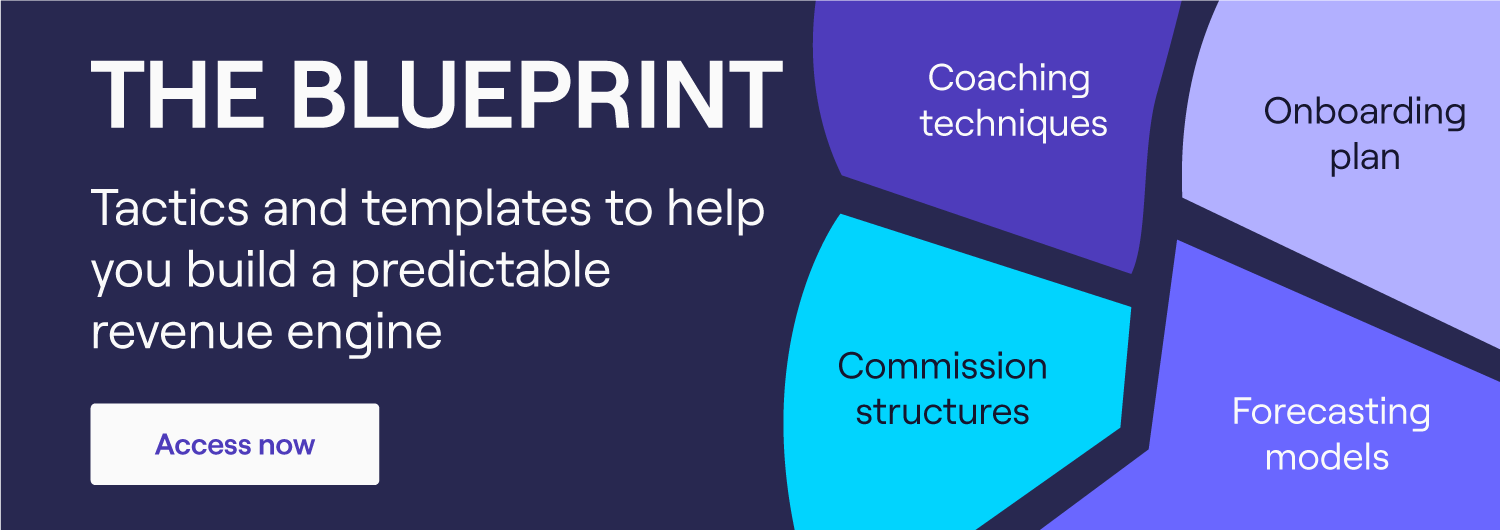

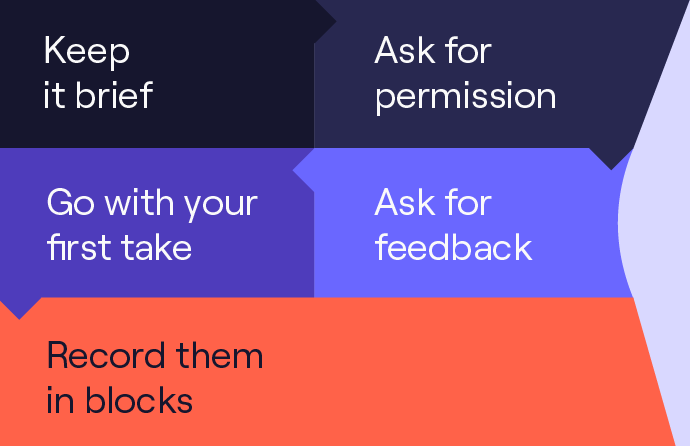
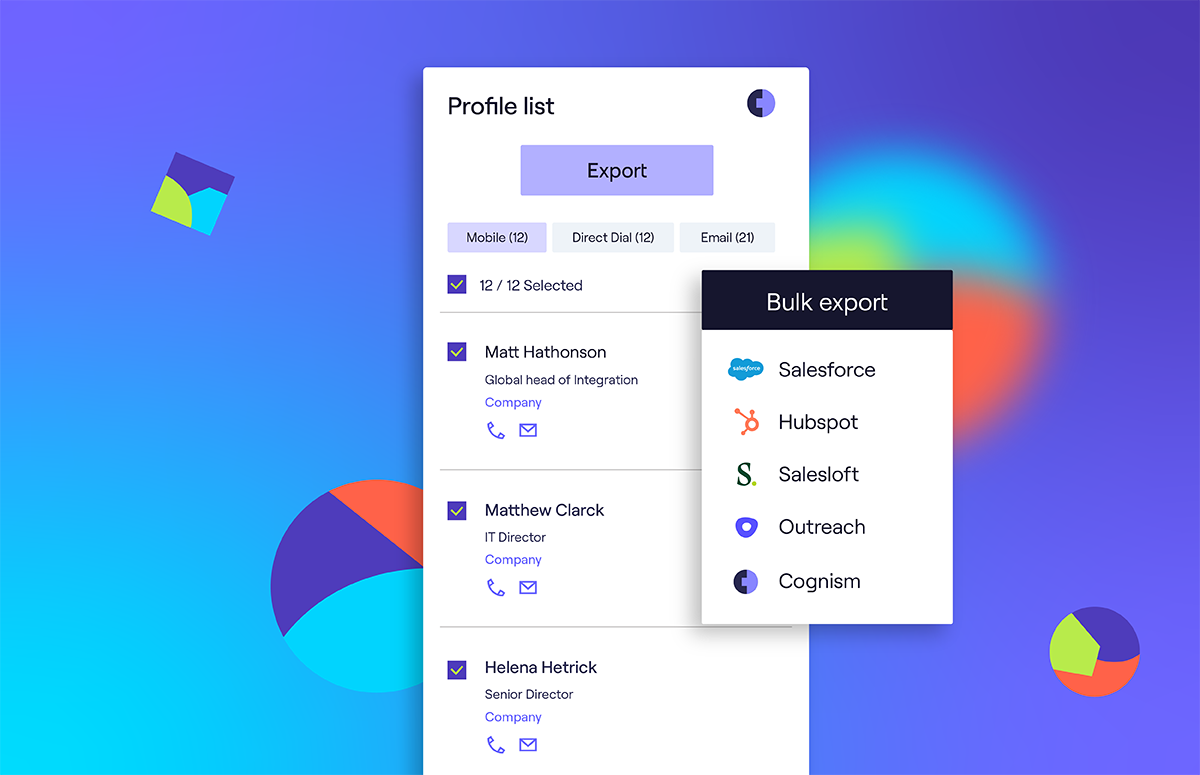
%20Campaigns%20-%20FR%20copy%202.png)